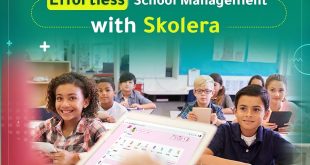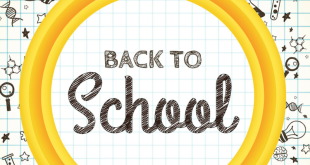What is the role of a teacher in modular distance learning?
Everyone knows that teachers are always the bearers of new and sometimes tiring tasks and roles. This is because teachers are usually the centre of the learning process.
However, when it comes to distance education; teachers need to be able to take on different roles to maximize the students’ learning experience. When using a new medium for learning, teachers should be able to adapt to this medium’s requirements and challenges
In a distance learning environment, students should be at the centre of attention. This can be facilitated using several strategies and attitudes that the teacher can adopt.
In this article, you will learn all about what constitutes an effective online classroom experience through understanding your roles
You will also get to know more about what teachers are using these days in their distance classrooms to help your class be more productive. We have also explained how engaging the parents in the students’ learning journey will supplement your efforts in the classroom.
Get started Skolera for FREE
Table of Contents
The Role of a Teacher in Modular Distance Learning
1) Create a suitable and engaging learning environment using active learning
A key role of a teacher in modular distance learning is to create an engaging learning environment using Active learning. This is a method of instruction where students are expected to engage in the learning content.
This is where the teacher takes on the role of an instructor/facilitator, not the conventional teacher trope. This mode of learning is more concerned with the learner and how the teacher should reach his/her full potential
This is called the student-centred approach. This approach aims to maximize the student’s contribution and efforts.
Watch this video to understand more about active learning.
The term active learning originates from “constructivism,” an educational theory that proposes that students are not passive learners; instead, they learn constructively and on several levels
This theory first came into the light through the Swiss psychologist Jean Piaget who was focused on the process of children’s psychological development. The connection between the two theories – active learning and constructivism – is worth investigating as both of them stipulate that learning is interactive in nature.
Given this theory, it can be said that students will definitely perform better if they are given the space to engage with the learning content. Studies have shown that students in a conventional learning environment are less likely to succeed than students who learn in an active environment.
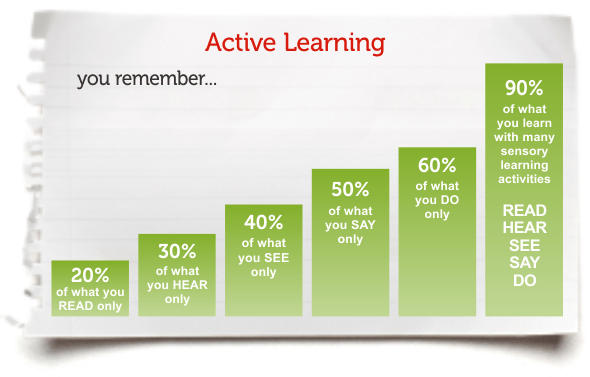
The active learning experience is great for teachers as well; they usually report better feedback as their classes are more vibrant and productive.
Learning does not stop at the point of receiving new information; students should read, write, solve problems and engage in rich discussions with the rest of the class to actually learn.
2) Give constructive feedback and ensure constant interaction
In a distance learning environment, you should always keep in mind that students need regular feedback because it is likely that they might feel lost. It is crucial to prioritize your students’ handwork by giving them feedback so that they feel immersed in a two-sided learning journey
Teachers are required to constantly make sure that students are focused and alert. Michael G. Moore, the distinguished professor of Education at Pennsylvania State University, has asserted that “distance education is not simply a geographical separation of learners and teachers, but, more importantly, is a pedagogical concept
That is why, in 1989, he devised a model of interaction that he considers as necessary for a successful distance learning classroom.
-
Learner-content interaction
This type of interaction is closely tied to the concept of education in general. It is the primary indication of whether the learner has grasped the learning material or not. Moore believes that this type of interaction is connected with Holmberg (1986) concept of the “internal didactic conversation.”
This concept is basically about how learners “talk to themselves” about the information and concepts that they receive from a lesson, a video or anything else.
Pro tip: Upgrade your learner-content interaction in the distance classroom by incorporating educational games.
-
Learner-instructor interaction
This type of interaction happens when an instructor delivers the lesson content and maintains post-lesson communication with the learner. This can take shape in asking questions or assigning tasks and giving feedback accordingly.
By doing so, the instructor can clarify misunderstandings, emphasize important points and encourage learners to take part in group discussions.
Pro tip: Improve learner-instruction interaction by increasing dialogue and communication with students through social media.

-
Learner-learner interaction
This type of interaction is often overlooked by teachers in an online learning atmosphere. Usually, teachers are more concerned with delivering the learning content and they forget about how students are lacking communication.
That is why it is important to create a learning atmosphere where students are encouraged to share ideas and work in groups.
Pro tip: Plan more breakout rooms in your online class where students can engage in class-related conversation and work as groups.
Join Skolera Now for FREE
3) Incorporate technology for a maximized learning experience
One of your roles as a teacher in modular distance learning is to embrace technology in the classroom. E-learning has become a pivotal part of education nowadays. Today, e-learning solutions are used by school and university staff to improve the quality of education.
If you are a teacher at school, it is time you start planning on how you can include technology into your curriculum and day-to-day teachings.
You can integrate technology into your daily classes, activities and assessments. Technology is a sure way to help students achieve better grades when they engage more with the learning material.
Find out more about educational technologies and Skolera’s platform.
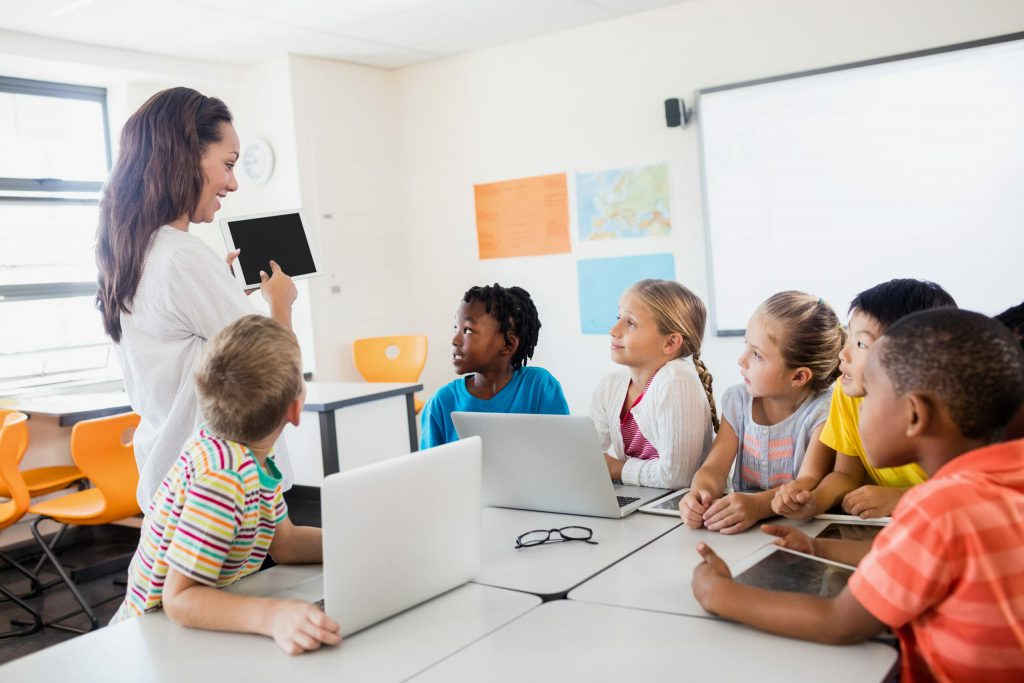
4) Make learning materials easy and accessible
Teachers must simplify the online learning experience for students by giving them access to several learning materials. This can take shape in PDFs, videos, and slides that are updated regularly and shared with the classroom. Teachers can do so in a simplistic manner using a good LMS solution.
Learning Management systems use cloud-based storage to store materials and data.
This will make it more convenient for teachers who prefer to have their materials ready at any time. Students will also benefit from this feature in their virtual learning journey as they will have lots of materials at hand.
5) Promote students’ self-sufficiency and independent research
One of the teacher’s responsibilities towards his/her students is to prepare them for university and even careers. Teachers should keep that in mind while planning their lessons or conducting their classes.
Academic achievement is definitely important for a student’s success, but these young minds also need to possess critical skills for surviving the career-making phase later on in their lives.
They need to learn to be self-sufficient when it comes to learning something new and this can be achieved through the chance to do independent research and discovery.
Through class discussions, debates and presentations; students will learn key skills like communication, time-management, teamwork and independent learning.
Distance learning has made this even easier for students and teachers. With the extra time outside the classrooms, students with inquisitive minds will automatically learn to be independent when it comes to doing the further reading.
As a teacher, you can encourage that with your other students by assigning graded class presentations where students would present on topics not included in their curricula.
This short article is useful for teachers who want further tips on how to encourage self-directed learning in the classroom.
6) Ensure constant communication and collaboration with students
A necessary role of a teacher in a modular distance learning environment is the insistence on regular and streamlined communication with the students. This will allow the students to be at ease when contacting their teacher when they feel like their input and queries are important.
In implementing that, teachers can make use of their school’s School Management System where features like a communicative platform are great to share questions, spark debates and bond with the students.
What Are Teachers Using For Distance Learning?
What is the role of a teacher in the learning process? It is to constantly search for new ways to keep the classroom more productive! Teachers had to modify their teaching strategies as well as their methods when schools decided to shift online during the pandemic that started in 2020. When everything school-related became digitized, teachers had to readjust their traditional modes of instruction.
This included incorporating more technology in the classroom and introducing students to different practises and skills. Here are some educational apps, games and strategies that teachers are using for distance learning.
1- Learning by teaching
In the classroom, this method subverts the entire teacher-student relationship. Instead of a traditional lecture when the teacher does all the talking, students should be encouraged to participate actively. According to studies, students absorb and retain information better when they teach the content they are supposed to learn.
2- Virtual labs
In recent years, virtual labs have become an increasingly important tool for science majors. The advantages of using virtual lab software in your classroom are numerous, ranging from the ability to undertake difficult and dangerous experiments with ease to saving teachers time and effort in running and maintaining real-life labs.

Naturally, this software will aid in the implementation of active learning by allowing students to participate in scientific experiments rather than listening to the instructor narrate the experiment on the board.
School Remote Learning: 5 Tips to Create Perfect Virtual Classroom
3- Decision-making activities
Any learning process requires decision-making and problem-solving skills. These abilities stress pupils’ ability to retain information and grasp the subject at hand.
That is why, posing a dilemma, enigma, or issue to the class and allowing them to work together to solve it could be quite beneficial, especially when students are trying to reach solutions as groups.
Try to encourage them to think about all of the possible solutions to the problem as well as how they can deal with it. This method could be particularly beneficial in the subjects of history and political science.
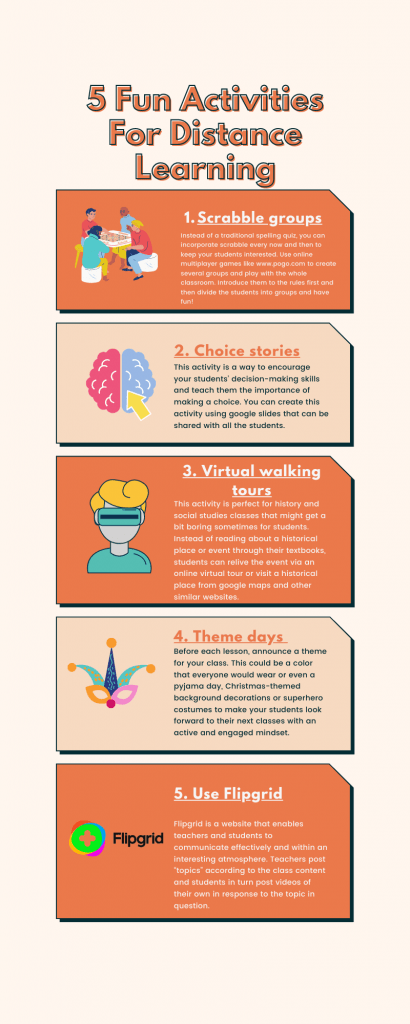
4- Flip Grids for extra interaction
What is the role of the teacher in online teaching? It is to encourage students to be more interactive!
Flipgrid is a platform that allows teachers and students to communicate effectively in a fun environment. It’s an excellent remote learning tool because it allows participants to record short videos on a shared platform while discussing a specific topic.
Teachers, in turn, upload “topics” based on class subject, and students, in turn, create videos in response to the topic.
One of the advantages of this technology is that it allows pupils to respond at their leisure, removing the pressure of having to respond on the spot. It’s also a fun tool because it lets users add emojis, stickers, and text to their videos.
Students will feel as if they are participating in a non-traditional educational setting while also benefiting.
In your literature classes, you can use Flipgrid to encourage students to share book analyses and commentary. You can use it in foreign language lessons to teach students new terminology and encourage cooperative learning.
Also, this tool is an excellent method to assess your students’ presentation and speaking abilities.
Watch this tutorial video to get you started on the basics of using Flipgrid.
5- Kahoot
Kahoot! is an educational app that allows students to play games to practice their knowledge. Teachers can use it to create new games or browse ready-made ones to challenge students where they can compete against each other.
As a teacher, this app will help you on the days when you do not feel like giving new content and you would like to spice up the classroom by making students energetic and interested to learn.
6- TED
Everyone knows that TED is a platform for speakers that want to share their ideas with the world. It would be a great classroom activity to share different concepts and ideas to give them a space to think and contemplate.
A key role of a teacher in modular distance learning is to constantly improve your skills in the classroom. You can highly benefit from TED as you will find lots of videos on how to enhance your presentation skills, your relationship with students and co-workers as well.
Watch this insightful video on how teachers are necessary for a student’s mental and academic growth.
Mobile Learning: 7 Essentials for You Not to Miss
Create Free Account
How to ask questions to make your class more engaged?
After discussing the role of a teacher in distance learning modality, let us move on to questions. A necessary role of a teacher in modular distance learning is to know how to ask the right questions in the right manner. Here are some tips:
- When you’re asking questions, keep Bloom’s Taxonomy in mind. This will allow you to categorise your questions into groups based on their difficulty levels, and it will also allow you to detect gaps in your understanding during your revision sessions.
- To keep your students thinking and encourage them to reconsider their answers, respond to their responses with more questions.
- Allow other students to assess and respond to their classmates. This will enhance students’ critical thinking skills. It will also encourage more students to speak up.
- It’s important to set aside time in each lesson for students to ask questions. This will allow you to give students 2-3 minutes after each question to ponder the question and respond in an organised manner. There’s no need to ask all of your questions at once!
Read more: How To Make Remote Learning Fun When Students Are No Longer Engaged
What Are The Role of Parents in Modular Distance Learning?
It is not only about the role of a teacher in online learning. It is equally important to discuss the role of parents in online distance learning. Let us take a look at these roles:
-
Support their children mentally and academically
Virtual education may be a novel experience for students who are accustomed to traditional classroom instruction. Students may get confused and frustrated as they struggle to acclimatise to this new learning approach.
They may also feel disoriented or unable to interact with their professors and classmates, which may deter them from participating in active class discussions or attending online classes.
That is why it is critical that parents work with their children at home to provide the required moral support, such as assisting them in focusing, removing any distractions, providing needed instruction in certain areas, or even counselling them on studying in times of need.
This may be supplemented with good academic assistance, such as parents monitoring their children’s schoolwork and being present when they need to fill in gaps in their grasp of specific class content.

-
Stay updated about the teacher’s work in the class
Parents must also arm themselves with as much information as possible on their child’s current status and growth throughout the school year. This involves learning about the teacher’s goals, deadlines, and classwork so that they may better understand what their kid is learning and get more familiar with their child’s education.
This might be quite useful for assisting with class assignments and parent-teacher meetings, both of which require the parent to have prior information about what has been happening in the classroom.
-
Learn about new class technologies
Understanding the fundamental ideas of technology in the classroom is another vital step that parents should take.
This entails a thorough knowledge of the school’s methods for learning and administration of the student’s affairs. Each parent needs knowledge of the fundamentals of video meetings, LMS systems, and digital classrooms.
Read more: Classroom Management Technologies: 5 Need to Know Things Now
Here’s a look at how Skolera’s learning management software for schools can help enhance your roles in the online classroom.
Teachers are the key users of LMS platforms, hence the system must cater to their requirements. Of course, a well-designed LMS platform should make life simpler for teachers, allowing them to be as productive and efficient as possible during their teaching experience.
Book FREE Live Demo Now
Here are some of Skolera’s time-saving and user-friendly features:
-
Uploading learning materials to a cloud storage
Teachers who want to have their resources ready at all times will appreciate online cloud storage. Furthermore, because LMS cloud storage is hosted online, it is more secure and less vulnerable to damage and/or loss.
-
Tracking students’ academic performance
When a teacher utilises the LMS system, they may turn on the tracking tool, which examines students’ progress in all of the course’s activities on a regular basis.
Throughout the school year, the system will automatically deliver statistics and reports that summarise each student’s performance.
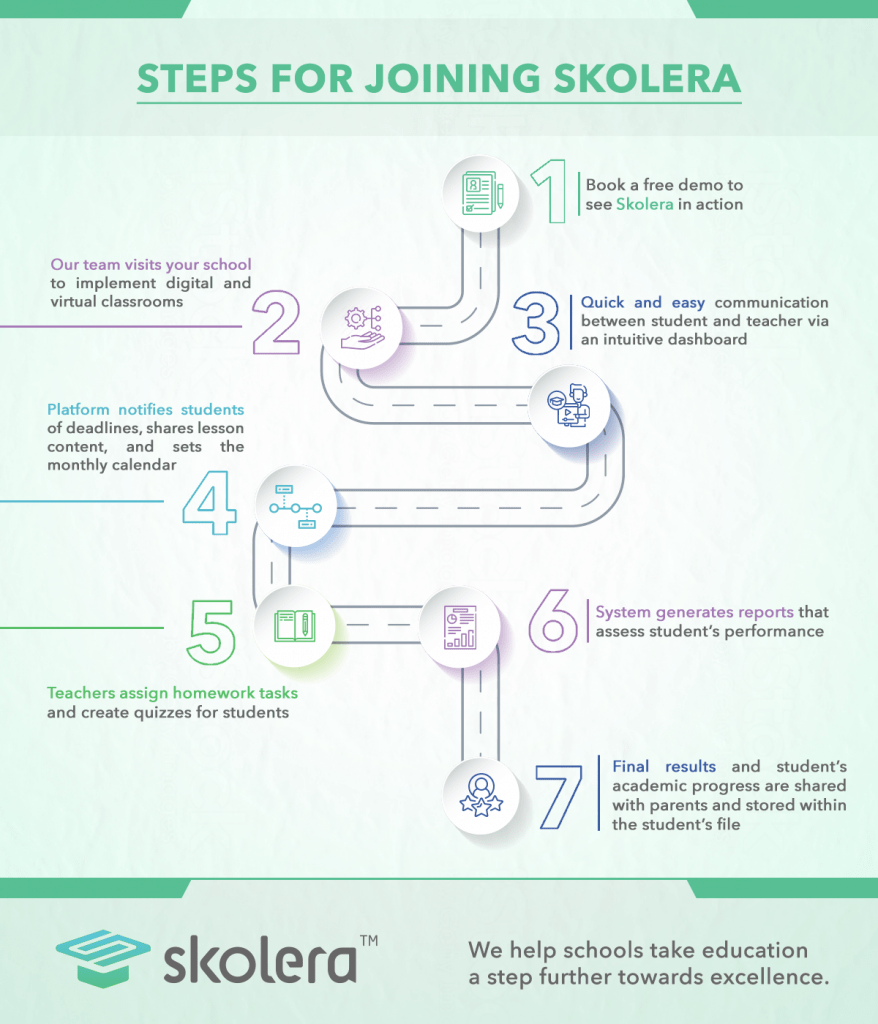
-
Organizing content under a unified platform
Nothing is more inconvenient for a teacher than having to access instructional information across many storage systems. A teacher can use an LMS platform to access a single platform that stores everything online.
Another advantage is that the instructor has the option of sharing all of the content with the class at once or sections of it over time.
-
Creating quizzes and assignments
Instead of wasting time making quizzes, a teacher may use the function that allows the system to build a digital version of the quiz automatically. This will free up time and effort for the instructor to focus on other vital responsibilities.
-
Initiating class discussions
Another essential aspect of any LMS platform is the presence of a panel for debate, idea exchange, and questioning. This improves communication between students and teachers since everyone benefits from the continuing conversation.
Teachers can use this panel to ask simple questions, get feedback from students, and exchange educational materials.
-
Generating student reports
An LMS system can also handle students’ end-of-year academic reports without the need for intervention from the teacher.
The system may generate reports that contain a student’s strengths and weaknesses based on data from assignments, quizzes, and class participation.
-
Reducing administrative tasks
What makes these platforms so useful is that they relieve teachers of administrative responsibilities. Teachers no longer take attendance in each class, add or drop students from courses. They no longer need to construct student databases, or plan online meetings. An LMS platform may handle all these laborious duties.
Find out more about Learning Management System: Features and Benefits
In this article, we discussed the role of a teacher in modular distance learning. This takes shape in how you ask questions, interact with your students and use technology to your advantage.
We also explained how engaging the parents in the distance learning environment will maximize students’ productivity outside the classroom.
Start FREE
Sources:
https://www.researchgate.net/publication/237404371_Three_Types_of_Interaction
https://k12teacherstaffdevelopment.com/tlb/encouraging-self-directed-learning-in-classrooms/
 Skolera LMS Blog Educational Technology Articles and News
Skolera LMS Blog Educational Technology Articles and News

